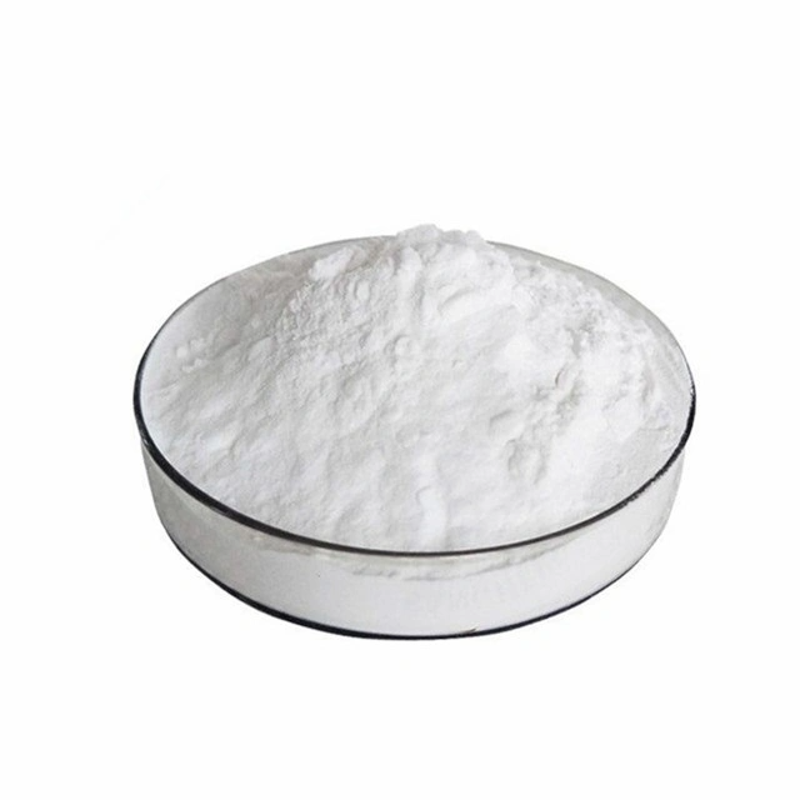Tyrosine-PET identifies GBM for "recurrence" or "late false progression"
-
Last Update: 2020-06-27
-
Source: Internet
-
Author: User
Search more information of high quality chemicals, good prices and reliable suppliers, visit
www.echemi.com
Diagnosing the "false progression" of glioblastoma (GBM) is a challenge, and the lesions of abnormally enhanced performance on conventional MRI images are difficult to identify with the true recurrence of the tumorStudies have shown that false progression may be caused by changes in the blood-brain barrier caused by radiation and chemotherapyRadiation-induced hypoxia promotes the expression of endothelial growth factors in blood vessels, mediates increased vascular permeability and promotes the function disorder of the blood-brain barrierFalse progress is generally thought to occur within 12 weeks of radiotherapy, but false progression can also occur after 12 weeks of radiotherapy, known as "delayed false progress"Because the performance of MRI is very similar to that of true tumor progression, delayed false progression can interfere with treatment decision-making and lead to unnecessary surgical removal- Excerpted from the article chapterRef: Klekamp JCurry.2017 Jul 1;81 (1): 29-44doi: 10.1093/neuros/nyx049."diagnosing the "false progression" of glioblastoma (GBM) is a challenge; Studies have shown that false progression may be caused by changes in the blood-brain barrier caused by radiation and chemotherapyRadiation-induced hypoxia promotes the expression of endothelial growth factors in blood vessels, mediates increased vascular permeability and promotes the function disorder of the blood-brain barrierFalse progress is generally thought to occur within 12 weeks of radiotherapy, but false progression can also occur after 12 weeks of radiotherapy, known as "delayed false progress"Because the performance of MRI is very similar to that of true tumor progression, delayed false progression can interfere with treatment decision-making and lead to unnecessary surgical removalTherefore, the rapid and accurate monitoring of the occurrence of false progress is the key to the treatment of GBMStudies have shown that the application of radioactively labeled amino acids, such as O-(2-(18F) fluoroethyl-L-tyrosine (18F) FEIT, is a marker-emission tomography scan (PET) that distinguishes true tumor progression from pseudo-progression induced by chemotherapy, as tracer ingestion reflects tumor-induced amino acid transport rather than inflammationResearch carried out by Constantin Lapa of the Department of Nuclear Medicine at the University Hospital of W?rzburg, Germany, confirms the effects of tyrosine-PET (FET-PET) in identifying progression of GBM authenticity and delayed falseityThis article was published online in April 2018 in J Neurosurgthe retrospective study included 36 patients who were pathologically diagnosed with glioblastoma; Patients received radiotherapy and tyrosine-PET scans at intervals of more than 12 weeksWhen the researchers looked at the cross-sectional map of the tyrosine-PET scan, they selected the area of interest on the axial image of the maximum intake of the tumorThe first area consists of a 10mm diameter circle, which centers on the highest active area and derives the maximum (SUVmax) and average (SUVmean) standard intake valuesIn the brain tissue area opposite the side hemisphere, select a 50mm diameter reference area containing white and gray matterThe tumor intake value is then divided by the standard ingestion value of the reference area to calculate the maximum and average ratio (TBRmax and TBRmean)diagnoses of "true tumor progression" if hethtopathological diagnosis is positive, clinical symptoms worsen, or follow-up MRI imaging progression is diagnosed at 4 weeks after the initial assessmentWhen the results of histopathology test are negative, the patient's clinical condition remains stable within 6 months, or after 4 weeks after the MRI is reviewed to enhance the sequence of lesions stabilization or even subside, can be diagnosed as "delayed false progression."significantly higher TBRmean and TBRmax in patients with true tumor progression than patients with late-onsy false progressionWhen the TBRmax threshold is 3.52, it is the best distinction between true tumor progression and delayed falseprogression, with an accuracy of 86%, sensitivity 89%, 75% specificity, and under-curve area (AUC) 0.87 to 0.07 (95% CI; p.002)The results calculated by TBRmean are similar to those of a UC at 0.84 to 0.08 (95% CI, 0.69-0.99; p-0.004), with an accuracy of 83%, sensitivity of 82%, 87.5% specificity, and a optimal cut-off value of 2.98, tyrosine-PET scan is an effective way to distinguish between the progressofy of true tumor syllabetry and the progressofofity of late falseityIt is less sensitive to artifacts than MRI, and because of the high contrast between the tumor and normal brain tissue, clinicians can also review the progression or change of brain tumors.
This article is an English version of an article which is originally in the Chinese language on echemi.com and is provided for information purposes only.
This website makes no representation or warranty of any kind, either expressed or implied, as to the accuracy, completeness ownership or reliability of
the article or any translations thereof. If you have any concerns or complaints relating to the article, please send an email, providing a detailed
description of the concern or complaint, to
service@echemi.com. A staff member will contact you within 5 working days. Once verified, infringing content
will be removed immediately.







